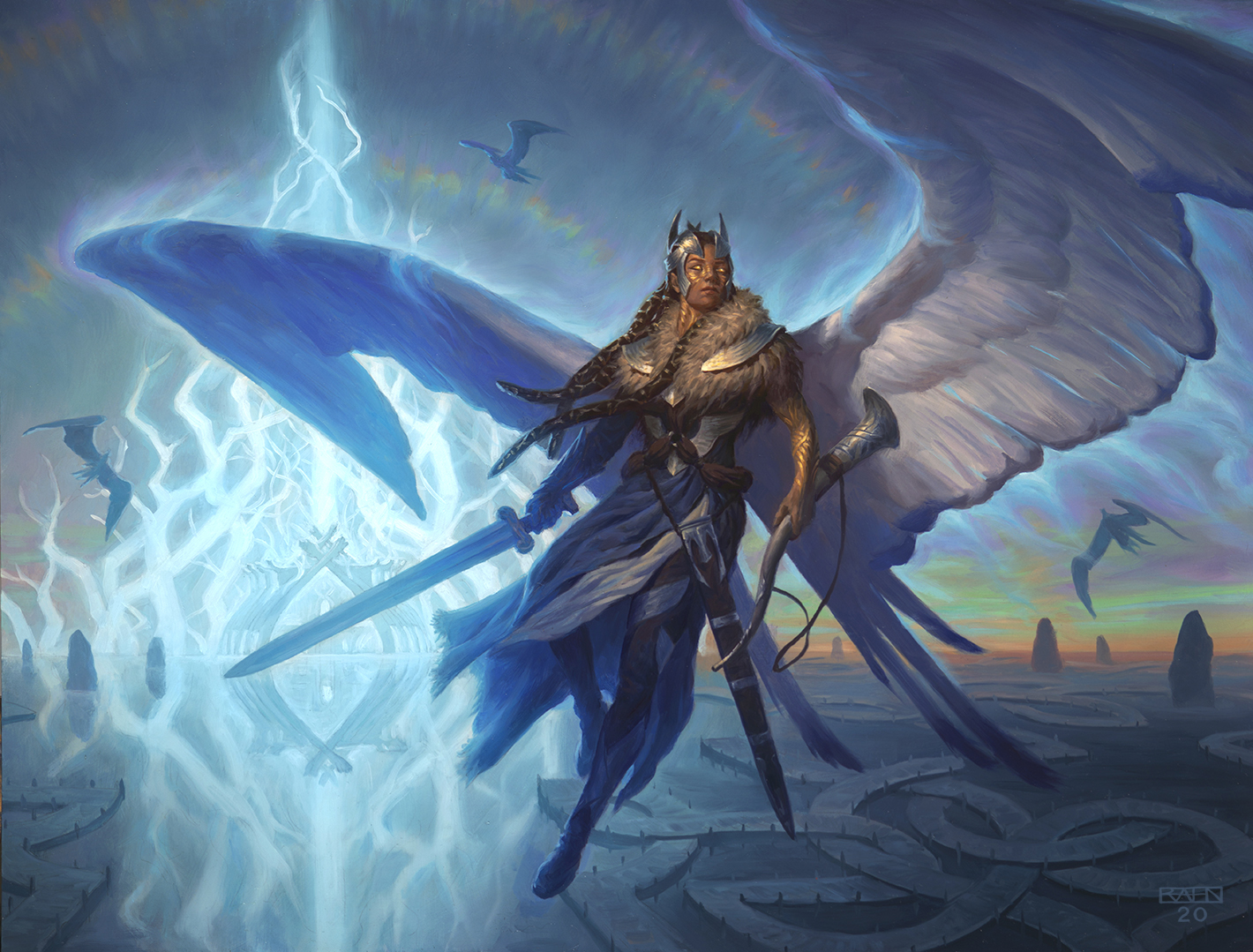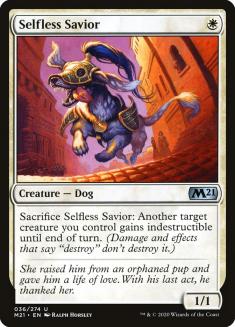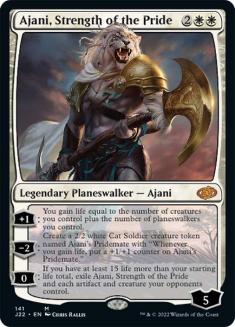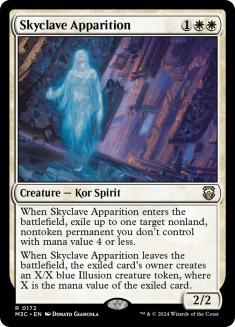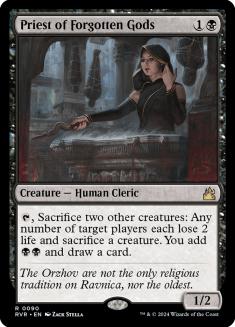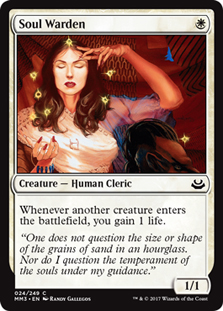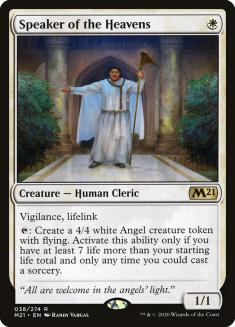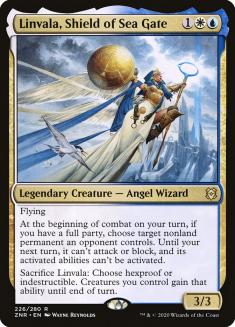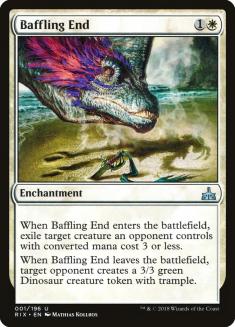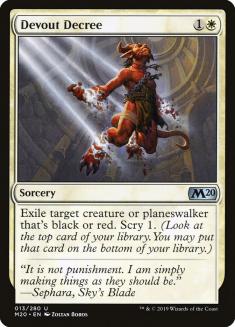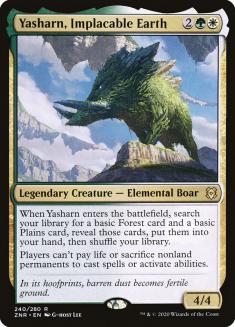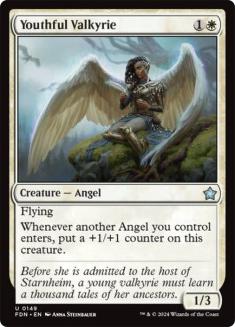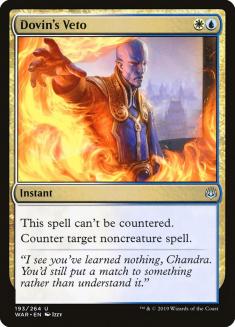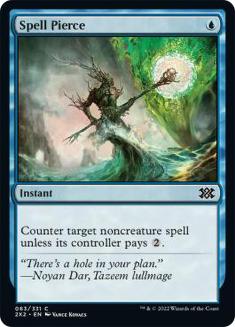When I first heard of the Angels deck in Historic, I thought it was mostly a meme — after all, I had tried and failed to make Angels work in Standard, and Historic is a much more powerful format. After playing with and against the deck a fair bit in preparation for the Kaldheim Championship this weekend, however, I’ve concluded that not only is it not a meme, it’s actually quite a good deck!
Bant Angels remained a contender for me until the very last day of decklist submission, when I ultimately opted not to play it. This was because I expected a large number of the good players to play Azorius-based control decks, and that’s the hardest matchup the deck has. If I expected a different metagame, I would probably have played it. The reason I’m writing about a deck I didn’t play is because I think it’s a pretty good ladder deck, and even a good deck for a different tournament from the one I’m going to play.
Here’s the list I would have played:
Creatures (32)
- 3 Soul Warden
- 4 Resplendent Angel
- 4 Bishop of Wings
- 2 Speaker of the Heavens
- 4 Linvala, Shield of Sea Gate
- 4 Skyclave Apparition
- 3 Glasspool Mimic
- 4 Youthful Valkyrie
- 4 Righteous Valkyrie
Lands (24)
Spells (4)

This is an aggressive deck, but it operates differently from other aggressive decks (and similarly to Elves in Historic). You usually spend the first turns of the game developing your side of the battlefield and then, at some point, it explodes and you go from having a 1/1 and a 1/4 to having 25 power on the battlefield out of nowhere. As such, you’re not interested in chip damage or early aggression; you’re just interested in setting up, and your attack pattern is 1, 2, 3, 30.
The reason the deck works like this is because all the effects compound with each other. You will cast a creature which will lead to gaining enough life to turn on Youthful Valkyrie and Speaker of the Heavens, and then when you make a token with the Speaker you will have gained enough life to trigger Resplendent Angel at the end of the turn, and this Angel token will gain you even more life. All of a sudden, you are at 40 life and you have an army. This is not an exaggeration — it’s quite common to end up at 40 or 50 life (and sometimes you go over 100, though they’re usually dead at that point).
It’s for this reason that Collected Company is so potent in this deck — not only does it let you find two of those pieces, but it also lets you get two of those triggers at the same time. Because of this, Bant Angels is probably the best Collected Company deck I’ve ever seen. In this deck, the card has the potential to bail you out from almost any situation and the requirement for it to work is minimal.
Imagine, for example, a curve of:
- Turn 1: Soul Warden
- Turn 2: Nothing
- Turn 3: Nothing
- Turn 4: Collected Company, hitting Youthful Valkyrie and Resplendent Angel. Gain five life, which triggers the Angel and leads to gaining five more life. When all is said and done, you’ll be at 30 life and have eighteen power on the battlefield. They will be dead Turn 5, and this is starting with just a Soul Warden and no Turn 2 or Turn 3 plays!
Now, let’s be a little more ambitious:
- Turn 1: Speaker of the Heavens
- Turn 2: Bishop of Wings
- Turn 3: Nothing. At this point, you have two power on the battlefield and you’re at 20 life.
- Turn 4: Collected Company, hitting Youthful Valkyrie and Resplendent Angel. Gain eleven life (eight from Bishop and three from Valkyrie), which turns Valkyrie and Speaker on. Attack for six, gain three more life, activate Speaker, make a 6/6, gaining ten life from it (four from Bishop and six from Valkyrie). At the end of the turn, make another 6/6, gaining ten more life.
When all is said and done, you will be at 54 life and have 27 power on the battlefield. In this case, the Collected Company gained you 34 life and added 25 power to the battlefield. And this is considering that you skipped Turn 3! Obviously these are arguably the two best hits, but there is a lot of room for you to have other creatures on the battlefield at this point, which means a lot of your hits can produce something like this outcome (for example if your Turn 3 is either of the three-drops).
As an aside, I’ve heard of some people taking out Collected Company for sideboarding against decks with Grafdigger’s Cage. I think this is an egregious mistake similar to taking out Oko, Thief of Crowns in your Simic Food deck — it’s the best card by so much that it’s worth the awkwardness into Cage, and you have Skyclave Apparition to deal with Cage anyway. Some decks like Jund Sacrifice can take out Collected Company — the Bant Angels deck cannot.
Bant VS Selesnya
After playing with both versions of the deck, I’ve concluded that Bant Angels is better than Selesnya Angels. The mana is far from perfect (in fact, the mana is surprisingly awkward for a deck that’s almost mono-colored), but I think the blue cards are worth it to give you a shot in any slower matchup. Besides, the blue maindeck cards are actually good (having access to Glasspool Mimic is part of the reason your Collected Companies are so good) and there’s simply no other card I’d rather play over Linvala, Shield of Sea Gate that’s in the Selesnya colors.
I’m not a huge fan of Soul Warden and Speaker of the Heavens, but I acknowledge that you need to be able to do something early in the game, so I tried a couple of versions with Selfless Savior in their place. Savior was good versus Azorius Control, but it wasn’t good enough to make the matchup good Game 1 and it was worse versus most other things. I’d be much more interested if it helped protect Yasharn, Implacable Earth after sideboard, but since it can’t do that due to Yasharn’s ability, I decided to just play the lifegain creatures. Most of the time they’re not great, but they can randomly be good as enablers for your other cards and they allow for the one-drop + Bishop of Wings + Resplendent Angel making a 4/4 start (though sometimes the Speaker has to chump-attack for that — it’s worth it).
You might have seen those ridiculous screenshots of the Angels mirrors where both players have 80 creatures and 450 life. In games like those, Ajani, Strength of the Pride is the ultimate mirror breaker. However, I’ve found it to be quite weak outside of that matchup specifically, so I don’t think it deserves a slot in the maindeck (though I do sideboard it in against some other things).
Originally I only had two Skyclave Apparitions, but the card has proven itself to deserve a full playset. Against the Jund decks, you really want to deal with Mayhem Devil and Priest of Forgotten Gods, and against the control decks you really want to remove Grafdigger’s Cage (and they often have cards like Baffling End and Cast Out), so I think it’s good enough to play as a four-of.
The Matchups
VS Jund Sacrifice
I think you’re favored versus Jund Sacrifice (the Collected Company version) by quite a bit, which was a shock to me because Jund Sacrifice is traditionally very good against tribal decks. After playing more, I reasoned that you’re favored because:
- Your creatures have too much toughness, which means Mayhem Devil is not that effective versus you. If you’re playing something like Elves or Goblins, a Mayhem Devil + Cauldron Familiar + Witch’s Oven turn will kill two or three of your creatures — with Bant Angels, it might kill zero. It can still be a problematic card, but it requires a lot more setup to work.
- All your attacking creatures have flying, which means Cauldron Familiar is ineffective as a blocker.
- You have access to a sideboard of Yasharn, Implacable Earth and more removal spells.
Since you operate mostly with a few big creatures, the best card from their side of the table is not Mayhem Devil but Priest of Forgotten Gods.
If they have an early Priest it can be quite tough to win, especially if accompanied by Claim the Firstborn, but if they don’t have Priest, I think you are a big favorite. If they cast a Priest on Turn 2 on the play and you have a Skyclave Apparition, it usually pays off to not cast a Turn 2 Bishop into it.
Out:
In:
After sideboarding, the game slows down — they have a lot more removal and so do you. Destroying Priest is paramount, so having four extra ways of doing that is pretty good for your side.
VS Jund Food
This matchup is both easier and harder. It’s easier because they don’t have the best card (Priest), or have only two copies most of the time. It’s harder because Korvold, Fae-Cursed King is an actual blocker for your creatures, and you have no ways of removing him — you have to go over or around him, which can be hard sometimes.
Out:
In:
The sideboarding is the same, and this is the reason I added Devout Decrees (previously I had four Baffling Ends), so that you have a way of killing Korvold. If the Food version becomes overwhelmingly more popular, you might have to play even more Decrees in the sideboard.
VS Azorius Control
Your worst matchup and the reason I decided not to play the deck in the end. It’s not just that they have Wrath of God and Doomskar, but also that you’re not fast enough to pressure them into doing anything and that they actually have good blockers — a 4/4 Shark Typhoon token just foils a lot of your late-game plans.
Out:
In:
Ajani isn’t the best card ever versus them but I think it’s better than what you’re taking out (you mostly just use it to make Pridemates). I tried a bunch of cards for this matchup (including Thalia, Guardian of Thraben and Reidane, God of the Worthy) but they all ran into the same problem — you don’t pressure them enough. They’re fine casting Wrath of God for five or six mana most of the time, so it’s better to just try to counter it instead. Even Brazen Borrower is a problem for Reidane!
VS Orzhov/Azorius Auras
This matchup can be very easy or very hard depending on their draw. I would say that overall it’s unfavorable, but with four Skyclave Apparition it’s possible to disrupt them a little bit and then create an overwhelming battlefield. Once they make a big creature and give it flying and vigilance, though, you’re in trouble.
Out:
In:
After sideboarding things don’t get any easier, as Hushbringer is a house against you — it stops most of your Angels from working. If you expect more Auras decks, you really need to have access to four Baffling Ends.
VS Elves
I think this is a good matchup (as are all random creature decks). They go wider than you at first, but they have no way to stop your synergies, so you gain a lot of life and go off harder than they do — they scale quadratically and you scale exponentially, if you will. Still, it’s possible to lose to one of their good draws, particularly if they have an unopposed Elvish Archdruid that powers up a quick Allosaurus Shepherd.
Out:
In:
Having Linvala, Keeper of Silence would be much better than Yasharn here (as well as versus Goblins), but I think Yasharn is better enough versus Jund to justify playing that instead. I think Ajani is reasonable here because it’s possible to get to 35 life without having won the game (particularly with Soul Warden) and then the one-sided Wrath of God just wins it for you, but I’m not super-confident in it.
Tips and Tricks
- If you Company into Glasspool Mimic, you can only copy something that was already on the battlefield before — it cannot become a copy of the other creature you find.
- Most of the time, you should just Company on your main phase. If you decide to do it on their turn, consider doing it on their second main phase rather than at the end of the turn, so you can trigger Resplendent Angel (if it’s the end of the turn already, it won’t trigger). Be aware though that they can still cast sorcery-speed sweepers, so you need to judge what is most important for you.
- Speaker of the Heavens can only be activated at sorcery speed. I got burned a few times from that one. Yes, more than once. Yes, I’m ashamed of it.
- Sometimes you need to chump block very early in the game to make sure you’re still at 27 life when you want to trigger your Angels. Similarly, you can chump attack with Speaker to turn on Resplendent Angel.
- Most of the time, you should prioritize more white mana with your Pathways over duplicates of blue or green. Sometimes you need double blue on six, but double green you need basically never.
- You usually play Bishop of Wings over Youthful Valkyrie, unless you’re playing against a control deck where the damage might be relevant.
- Be aware that your Angel tokens will trigger your Bishops and Valkyries — it’s easy to forget.
- If they Claim the Firstborn your Linvala, always sacrifice it!
Overall, if you’re looking for something fun and different, I’d definitely recommend Bant Angels. I think it’s a strong ladder deck or a strong deck for tournaments where you don’t expect a lot of Azorius Control, and it’s definitely much better than you might think at first glance.

